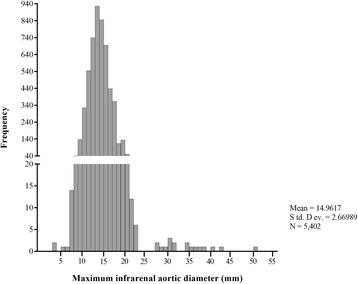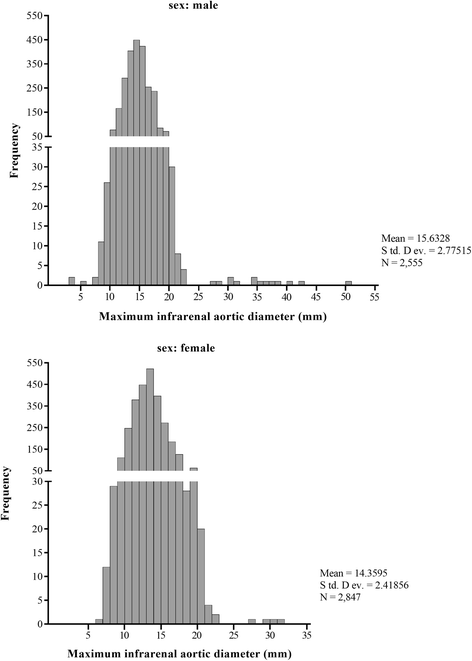Primary results of abdominal aortic aneurysm screening in the at-risk residents in middle China
- PMID: 29614976
- PMCID: PMC5883536
- DOI: 10.1186/s12872-018-0793-5
Primary results of abdominal aortic aneurysm screening in the at-risk residents in middle China
Abstract
Background: There is a lack of information on the epidemiological data and risk factors associated with abdominal aortic aneurysm (AAA) in Chinese population. We reported the primary results from screening five-community population in Middle China for AAA.
Methods: From March 2014 to October 2015, an AAA screening program was performed in three urban and two rural communities. These communities were randomly selected. All at-risk residents (a total of 6925) aged 40 years or older were invited to attend an ultrasound scan for AAA. At-risk population was defined as having a family history of first-degree relative diagnosed with AAA; or smoking and aged 55 years or older; or having a history of CAD, cerebrovascular disease, hypercholesterolemia, obesity (BMI ≧ 26 kg/m2) or hypertension.
Results: The study investigated 5402 subjects and the mean age of them was 61.2 ± 10.4 years old. It included 2847 women aged 62.5 ± 10.4 years and 2555 men aged 59.7 ± 10.2 years. The mean maximum infrarenal aortic diameter (Max-IAD) was 15.0 ± 2.7 mm (from 4.1 to 51.5 mm). Eighteen people (aged 68.0 ± 10.4 years) with AAAs were detected (prevalence rate was 0.33%), and the prevalence rate in males was higher than in females (0.55% vs 0.14%, respectively, P = 0.009). Additionally, the screened subjects aged 55 to 75 years had a higher prevalence rate of AAA than other age groups (0.51% vs 0.11%, respectively, P = 0.016).
Conclusion: The mean Max-IAD of the screened population in Middle China was apparently small by comparison with other reports. The result of low prevalence rate of AAA didn't support routine screening in Chinese population. The at-risk males aged 55 to 75 years should be targeted for further screening.
Keywords: AAA; Max-IAD; Prevalence rate; Ultrasound screening.
Conflict of interest statement
Consent for publication
Not applicable.
Competing interests
The authors declare that they have no competing interests.
Publisher’s Note
Springer Nature remains neutral with regard to jurisdictional claims in published maps and institutional affiliations.
Figures
References
Publication types
MeSH terms
LinkOut - more resources
Full Text Sources
Other Literature Sources
Miscellaneous



